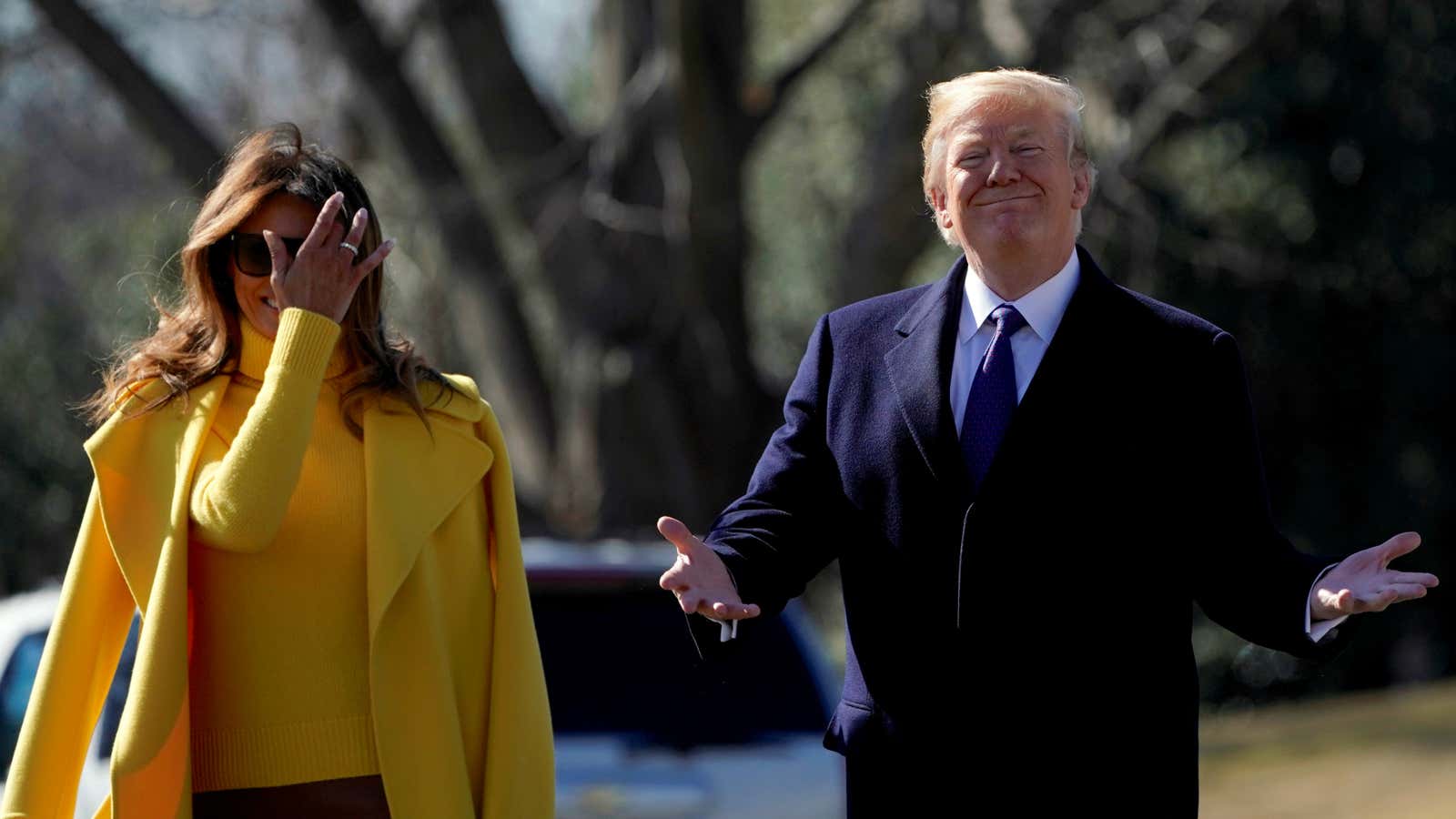When the US confirmed that it would be slapping the European Union, Mexico, and Canada with tariffs on steel and aluminum imports, many saw the move as the action of a volatile president, stubbornly ignoring warnings from economists and industry experts.
However, Donald Trump’s decision is actually just a revival of a routine strategy that many presidents before him had executed—sparking a trade war between North America and its allies. Nixon did it, Reagan did it. Way back in 1930, Herbert Hoover signed the Smoot-Hawley Tariff Act, which decimated trade between the US and Europe and is believed to have exacerbated the Great Depression.
Trump’s tariffs announcement likely felt shocking this week, because the last time sparks flew over steel was 16 years ago.
In 2002, George W. Bush, also in a misguided attempt to shore up the American steel industry, slapped metal tariffs on imports from Europe, South America, and Asia. He declared that the tariffs would be in place for three years; he lifted them just 21 months later.
What gave? Orange juice mainly. The EU’s plan to slap $2 billion worth of tariffs on Florida oranges—the state where his brother Jeb Bush was governor—and on exports from states that were vital to Bush’s 2004 election hopes did the trick.
Moving into present day, Trump’s move this week is likely to unleash a torrent of retaliatory measures from the EU. The heads of the European Commission, Germany, and France are furious, slamming the tariffs as “deplorable” and “illegal,” and vowing reciprocation. If it does hit back, it’ll impose duties on US imports, from everything from jeans to motorcycles.
The US president’s disdain for the principles of borderless free-trade that bind the EU may have blinded him to the fact the EU has got serious swagger these days. Despite Brexit, the refugee crisis, and the growing threat of populism, the bloc is pushing through big trade deals, like with Japan last December, and buying and selling billions worth with China.
Donald Trump could learn a lot just by looking at the EU’s past responses to American presidents, who have tried to hurt the bloc, as well as his own predecessors.
